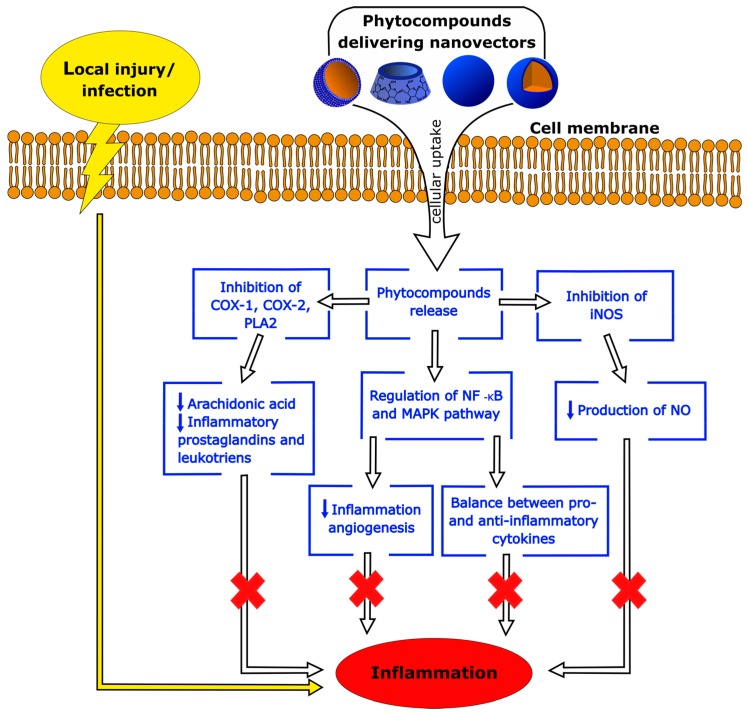Figure 5.
Schematic diagram of the phytocompounds effects on the main cellular pathways involved in inflammation. After cell internalization of a nanovector, encapsulated phytocompounds are released into cytoplasm. Their anti-inflammatory action is elicited via inhibition of nitric oxide (NO) production by nitric oxide synthase (iNOS); reduction of arachidonic acid metabolites and prostaglandins through inhibition of the cyclooxygenase (COX) and Phospholipase A2 (PLA2) pathways; and regulation of nuclear factor NF-κB and mitogen-activated protein kinases (MAPKs) pathways, which modulate the expression of pro- and anti-inflammatory mediators including cytokines, chemokines, and adhesion molecules.

